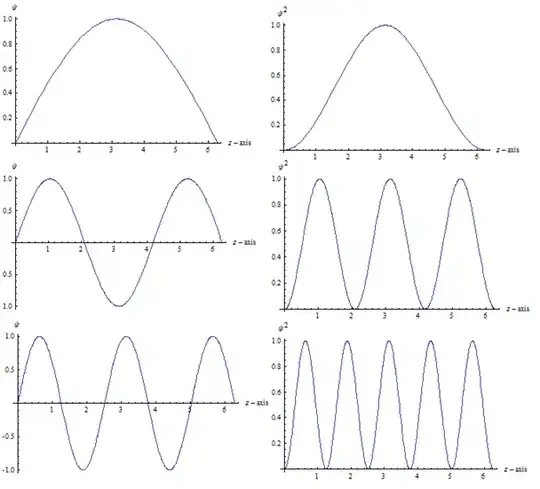Born's statistical interpretation of the wave function says that $|\Psi (x,t)|^2$ is the probability density of finding the particle at point $x$ at time $t$, then
$$\int_{-\infty}^\infty |\Psi (x,t)|^2 dx = 1 \tag{1}$$
In other words, the particle must be somewhere in space at a certain time $t$. Is this equivalent to saying that the particle must be somewhere in time at a certain position $x$?
My Thoughts: Why I can't write,
$$\int_{-\infty}^\infty |\Psi (x,t)|^2 dt = 1 \tag{2}$$
Whenever I look for the position of the particle, $\Psi$ stops obeying the Schrödinger equation and discontinuously collapses to a spike around some position $x$. If I was able to focus my microscope at say $x = 2$ and look for the particle across all of time (in this case, time is the measurement at not position so setting my microscope at $x = 2$ doesn't disturb anything), then $\Psi$ would collapse to a spike around some value of $t$ and this method of normalizing the wave function would be appropriate. However, humans can only sample at instants in time and look over all space (equation $\textbf{(1)}$). We can't sample at an instant in position and look over all time (equation $\textbf{(2)}$). Scientists can't search for the particle in time. Therefore $\textbf{(2)}$ is not appropriate. However, even though we can't do this as humans (search through time at will instead of staying anchored to the present), is it wrong to say that 'nature' can't accomplish $\textbf{(2)}$? Or do we have laws like the 2nd Law of Thermodynamics that say nature is prohibited from doing so? Is this an example that shows how space and time are not on equal footing?
